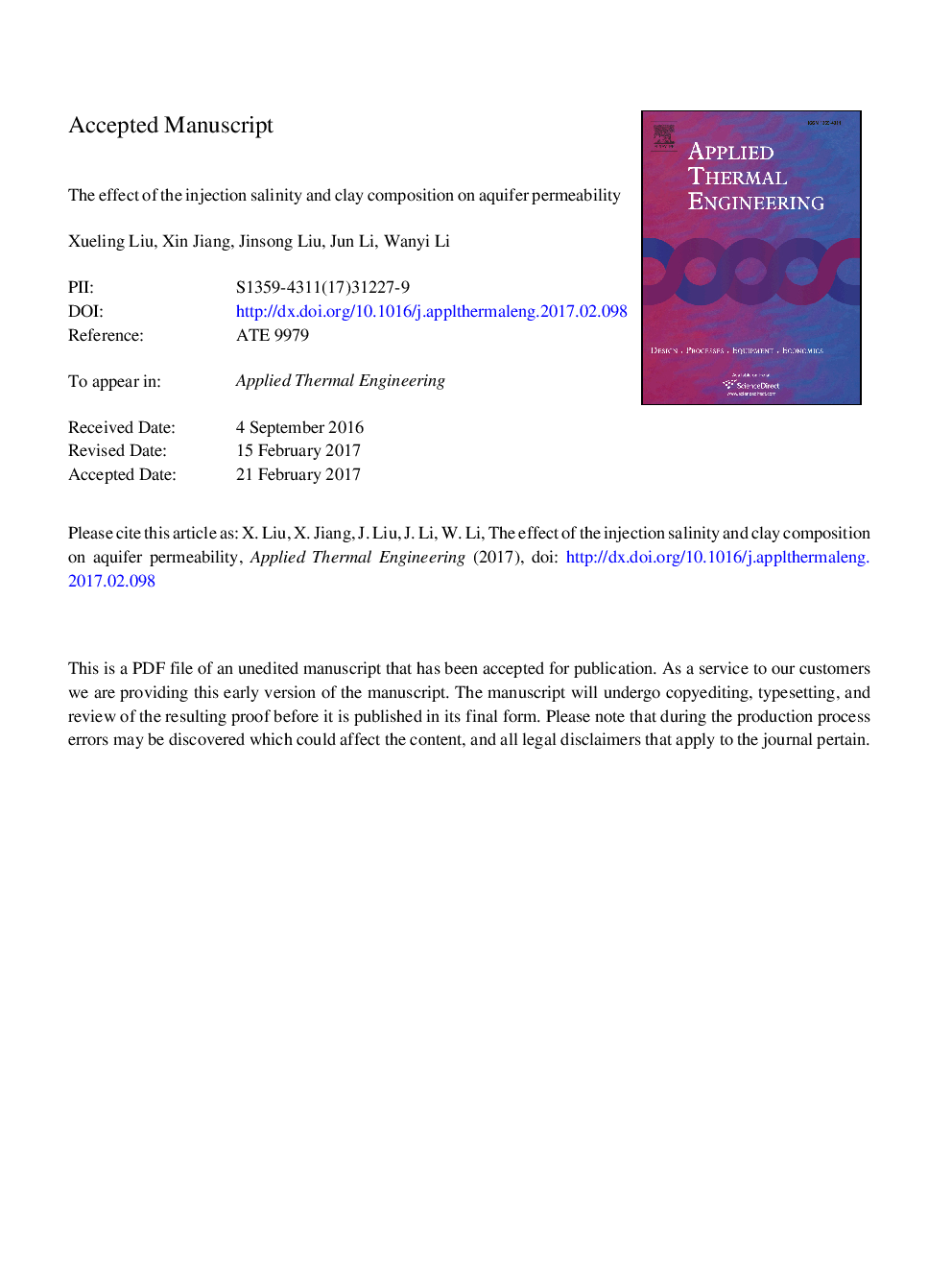| Article ID | Journal | Published Year | Pages | File Type |
|---|---|---|---|---|
| 4991385 | Applied Thermal Engineering | 2017 | 32 Pages |
Abstract
Seasonal energy storage can be achieved by injecting hot or cool water into underground, but when the brine aquifer is used as the energy storage reservoir, there is the problem of permeability reduction, even channel blocking due to the release, immigration and deposit of colloidal particles. Aiming to find the effect of clay mineral compositions and the injection fluid salinity on the permeability of the brine aquifer, an experimental study was carried out using sand column. When the sand samples contain illite, montmorillonite and kaolinite, the permeability characteristics were tested with the injection fluid salinity ranging from 0 to 5Â g/L. Results indicate that clay minerals are the most important factor that influences the permeability of the brine aquifer and montmorillonite causes the largest permeability reduction; the effect of injection salinity is weaker than the clay minerals and the permeability characteristics of all of the three tested sand samples have abnormal change in the injection concentration ranging from 2Â g/L to 4Â g/L. That concentration range should be avoided when using the brine aquifer as the thermal energy storage reservoir.
Related Topics
Physical Sciences and Engineering
Chemical Engineering
Fluid Flow and Transfer Processes
Authors
Xueling Liu, Xin Jiang, Jinsong Liu, Jun Li, Wanyi Li,
